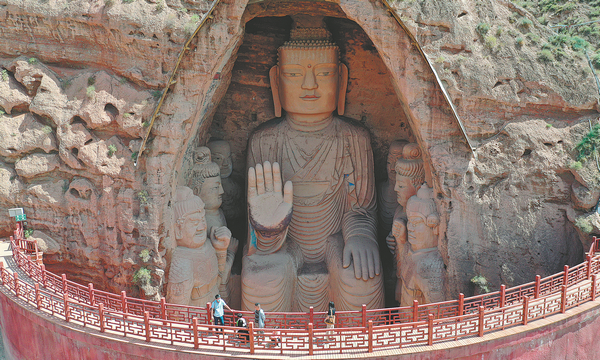Restoring the faith

The 1,600-year-old Tiantishan Grottoes in Wuwei, Gansu province, influenced other ancient grottoes. [Photo/Xinhua]
Editor's note: In 2020, the State Council, China's Cabinet, issued the first national-level and long-term guideline specifically for the protection and study of grotto temples in China. China Daily journalists talk with researchers and conservators to showcase the cultural splendor and how people take care of them.
A 28-meter-high Buddha statue stands on a cliff in Wuwei, Gansu province, along with his heavenly guards. In spite of the solemn atmosphere, the Buddha's face wears an enigmatic smile, from which many pilgrims derive a sense of inner peace.
As the biggest statue in Tiantishan Grottoes, the Buddha, in No 13 Cave of this Buddhist grotto complex, has been there for over 1,300 years.
In ancient times, it was probably hard to reach this sacred place due to the rugged landscape.
The name, Tiantishan, means "a mountain with a ladder to heaven".But today's visitors have an easier way to reach the spot.
A dam was erected just in front of the Buddha statue in 1960. People can enjoy the view of the reservoir and the cultural heritage from the top of the dam. The landscape explains how modern people live with history.
Nevertheless, continuous seeping water from the grotto rocks has been a threat to the Buddha statue for a long time.
The feet and bottom of the garments on the Buddha and his heavenly guards have eroded. Appearance of the Bixi (a turtle-shaped sacrificial animal) statues, upon which the guards stand, has also been affected. Some rocks began to collapse. Mice often made their shelter in the cracks of the statues.
"Water and salt kept oozing out of the rock," says Liu Zhi, director of Tiantishan Grottoes Protection and Research Institute.
"The aged statue had 'disease'. It urgently needed to be cured."





 Print
Print Mail
Mail
